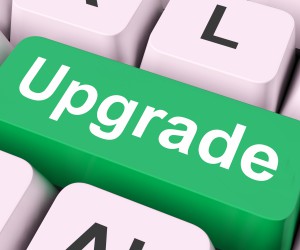Internet Explorer Support and the Question of Modernization
Ed Bott published an article called “Who’s still using Internet Explorer? And why won’t they upgrade?” I think he skims the surface of the first question, but the second appears to be rhetorical. In case you didn’t hear, all versions of Internet Explorer below 11 will be unsupported starting January 2016. Microsoft announced this two years ago, but it still might come as a surprise to some customers. Also come January, Office 365 users can expect a noticeably “diminished experience” should they continue to utilize IE 8 and 9, per a more recent Microsoft announcement. The message is clear: If you aren’t thinking about Windows 10, now is a good time!
case you didn’t hear, all versions of Internet Explorer below 11 will be unsupported starting January 2016. Microsoft announced this two years ago, but it still might come as a surprise to some customers. Also come January, Office 365 users can expect a noticeably “diminished experience” should they continue to utilize IE 8 and 9, per a more recent Microsoft announcement. The message is clear: If you aren’t thinking about Windows 10, now is a good time!
Let’s take a look at Ed’s stats:
- Net Market Share says Microsoft browsers account for 50.7% of all worldwide visits
- Between 200 million to 800 million Windows PC users are still using Microsoft browsers
- Internet Explorer 11 accounts for an average of over 50% of most of Microsoft browsers, with IE 10, 9 and 8 all coming in at less than 15% on average
Now, most versions of IE are tied to the OS, but the problem is none of these stats are broken down by consumer and business. This is really where things differ.
Consumers have more flexibility to upgrade their own desktops at their leisure because most aren’t worried about website compatibility. If they want the latest OS or hardware, they will either use the default browser or load up something else. Businesses are always developing for the latest platforms because they are following consumer innovation. This is how they can keep traffic coming to their websites.
Back when Windows Server 2000 was released, a lot of companies hired developers to run their own Line-of-Business (LOB) applications. This was before massive ERP systems had a strong foothold. When Windows Server 2003 came out, the applications were moved over, but somewhere between then and the next release of Windows Server, the developers were let go and the business was left with a barely supported LOB application running on an unsupported OS.
This happens more than you might think.
When you look at the history, it becomes apparent why so many legacy IE users are out there. Businesses, not consumers, are stuck with legacy software to back legacy applications that work great, but are ultimately unsupported. If you think IE is bad, think about all the specific versions of Java there are out there. Coming from an Enterprise, I can tell you that sometimes it isn’t only the browser holding upgrades back, but Java as well (and of course, the lack of developers).
Here is where we find ourselves. It’s a few months after the Windows 10 release and customers are starting to realize the old model of “good enough” support is no longer valid. How can you possibly innovate when you aren’t leveraging the latest technologies?
Change is certainly scary, but in the case of legacy IE, there are only benefits. The short term benefits are supportability and security. By moving to the latest IE or Windows 10, you are ensured to be up to date against malicious activity. This doesn’t solve the long term problem though – those legacy apps.
Here’s where the IE discussion becomes a modernization discussion. Take a look at your legacy, unsupported applications and ask yourself – “What would I do if that went away?” Now remember that you are looking at a (likely) unsupported application running on an unsupported operating system. Even if you have storage replication and a great DR plan in place, if anything goes wrong, you are out of luck.
Arraya can help you take a look at your workloads and give you recommendations on what to do next through an offering called Data Center Day. You bring your data center inventory in and we bring our knowledge experts to show you the latest technology and how you can get innovating again. Interested in scheduling a Data Center Day? Reach out to us at http://www.arrayasolutions.com/contact-us/ to set yours up today.
